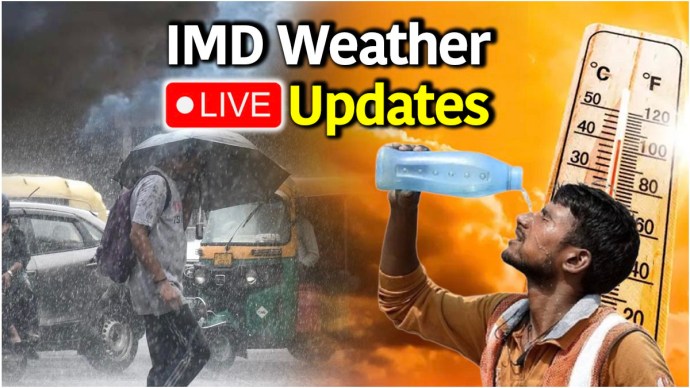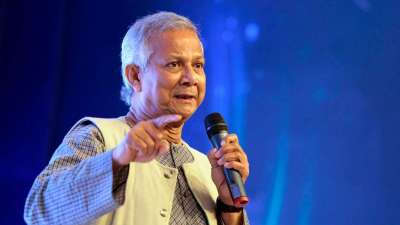Bharat Ek Soch: In a country like India, where the population exceeds 1.45 billion, and every citizen takes pride in being a part of the world’s largest democracy and a strong republic, a historic exercise is set to begin. For the first time after independence, a caste census will be conducted under the BJP-led NDA government. As India officially prepares to count its people based on caste, this bold decision is sure to trigger a national conversation over the next few days.
Notably, in India, which is a home to more than 4000 castes and sub-castes, the land where 20,000 languages are spoken, and a country which is a leading example of ‘unity in diversity, Caste has largely impacted the Indian Society, politics, and the economy for a prolonged time. It becomes very essential to ask as well as understand a set of questions – where did the caste come from? What was the reason behind its existence? Which caste is considered ‘pure’ or ‘impure’? Who built the walls based on caste taller, and who tried to break these barriers?
Let’s try to understand the answers by exploring the mythological texts, history, philosophy, science, and sociology.
Varnashram System – “Karma, Not Janma“
As India stands at the threshold of an upcoming caste census, have you ever wondered why our Indian society’s structure is not similar to the social system followed by the rest of the world? Today, India is the only country where seven major religions live in unity, 22 official languages, over 200 mother tongues are spoken, and there are more than 4000 castes and sub-castes. This ancient tradition, where Hindus divide themselves based on caste and sub-caste, persisted for thousands of years. Broadly, the traditional Hindu varna system was divided into four major social classes – Brahmin, Kshatriya, Vaishya and Shudra. The root of the Varnashram system was karma, not Janma (Birth), but later, the walls of caste grew even taller and stronger.
Where Did Caste Come From?
An individual’s place in society was not determined by their work, but rather by caste superiority. People judged and competed with one another to prove themselves superior to others. Indian Sociologist Mysore Narasimhachar Srinivas terms this social process as “Sanskritisation”. He argued that Sanskritisation typically refers to a process where lower castes or tribes in India try to adopt the Upper caste’s customs, ideology, and rituals. But first, let’s understand how the caste system came into existence.
When & How Did Caste System Come Into Existence?
The caste system slowly came into existence during the Vedic period. During the Mahabharata, King Shantanu married Satyavati, who belonged to the Nishad caste. Their son, Rishi Ved Vyasa, was a great brahmin. Similarly, during the Ramayana, Suryavanshi Lord Rama considered Nishad King Kewat his friend, and even ate the sour berries already tasted by Shabari. The caste system continued from the Treta Yuga to the Dwapara Yuga, but the practices were carried forward, and the relationship of roti-beti was also maintained with other castes.
The answer to when and how the caste system came into existence in Hindu society is divided. Some put forward the theory of its origin based on the Purusha Sukta of the Rigveda, while some try to fit the division of castes based on karma and colour. Some people even link it to the economic behaviour of the society.
Indians Were Divided Into Three Groups In ‘The People Of India’
In the book ‘The people of India’, Herbert Hope Risley has divided the Indians into three groups – Dravidian, Indo-Aryan and Mongoloid. He argued that the caste system in India was born from caste differences and endogamy. It majorly developed after the arrival of Indo-Aryans from Persia, when the society was divided into priests, warriors, farmers, and craftsmen. They are the ones who continued this practice in India, restricting marriages with other groups to maintain caste superiority in the society.
Some historians have notably challenged the Aryan Theory. But the larger question is, when and how did caste originate? The whole debate follows a clear-cut answer. The most controversial book, largely responsible for the continuous existence of the caste system, is ‘Manusmriti’. However, there is no consensus among historians about when it was composed.
Evolution Of Caste System Among Indian Muslims?
Experts and some historians believe that Manusmriti was composed about 2300 years ago and that the book contains a total of 12 chapters. There has been a constant political debate over it from time to time. There are three things which are majorly responsible for it – The East India Company, which accepted the Manusmriti as the original book of Hindus; Fundamentalist Brahmins, prompting a vision for running the Hindu society based on Manusmriti; and Dr. Bhimrao Ambedkar, who burned the book, thus eliminating its influence from Indian Society.
Although there is no place for any caste discrimination in Islam, a caste system like that of Hindus exists among Indian Muslims, who are about 20 crores now. It is equally important to understand how the caste system evolved among them.
Popular Urdu poet and philosopher Muhammad Iqbal has an iconic sher – “एक ही सफ़ में खड़े हो गए महमूद-ओ-अयाज़, ना कोई बंदा रहा…ना तोई बंदा नवाज़”. Through this verse, Iqbal explained that when Mahmud Ghaznavi and his slave Ayaz offered namaaz, they were both on the same level. During the time of namaaz, no one is seen as a king or a slave. All the followers are equal. However, most of the Indian Muslims adopted Islam by converting from Hinduism.
Castes Seen Through Two Lenses
India became independent in 1947, but was never freed from the labyrinth of castes. There was a long debate in the Constituent Assembly for the representation of castes and the protection of the lower classes. It was challenging for the Constituent Assembly to decide whether there should be a reservation or not.
In India’s inclusive society, it would be more logical to see castes through two lenses –
– A particular section of society is tied together by the thread of caste and sub-caste, the basis of which is birth and marital relations.
– A society cut into caste divisions can never unite and keeps fighting for prestige with each other.
This tendency probably did not bring unity among different castes. The upper castes did not want to see the backward castes as their equals. Probably, they took pleasure in suppressing them. Notably, politicians never made an honest effort to end discrimination and continue to exploit people by treating them merely as pawns on the political chessboard.











